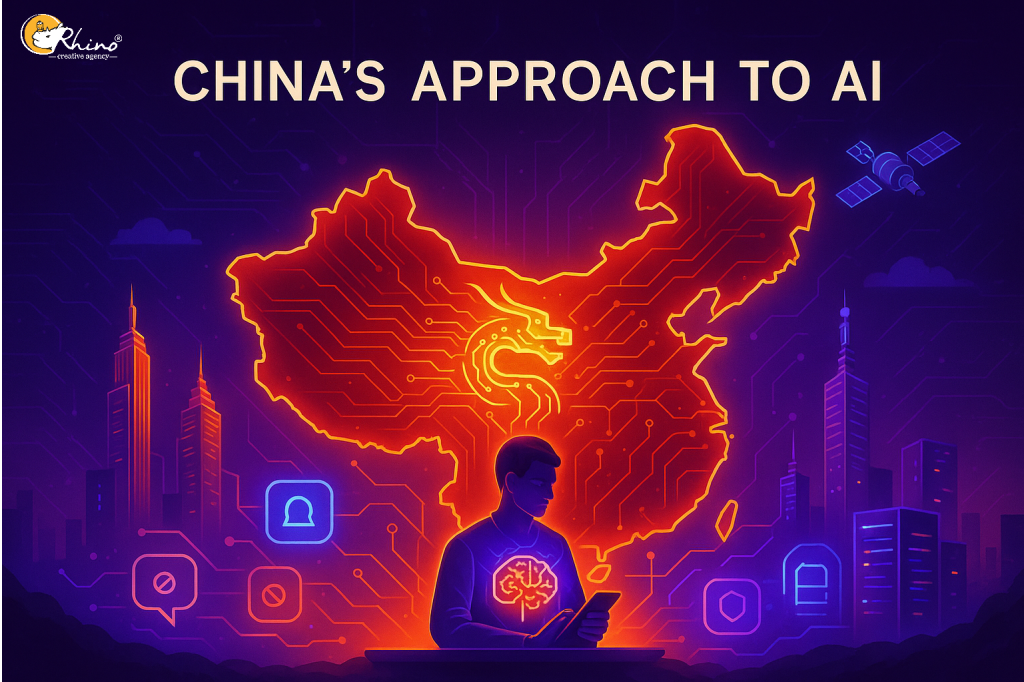The Distinct Vision for AI in China: A State-Led Approach to Global Leadership
China’s vision for artificial intelligence is fundamentally different from that of Western nations, particularly the United States. While the U.S. relies on a more decentralized, private-sector-driven model, China’s strategy is a coordinated, top-down, state-led initiative with the explicit goal of becoming the world’s primary AI innovation center by 2030. This centralized approach, laid out in the “New Generation Artificial Intelligence Development Plan” (2017), gives China a unique advantage in key areas of AI development. However, it also presents challenges and raises significant ethical and geopolitical questions.
China’s Strategy: Centralization and National Ambition
China’s AI strategy is a prime example of its industrial policy, where the government plays an active role in steering economic and technological development. This approach offers several distinct advantages.
First, it enables a systemic layout and the ability to concentrate massive resources on major, long-term AI projects. The central government, through national and local investment funds, can pour capital into research, talent development, and the creation of AI pilot zones and industrial parks. This allows for large-scale, coordinated efforts that would be difficult to replicate in a purely market-driven system.
Second, China’s vast population and widespread digital adoption provide an unparalleled source of big data. The government’s less stringent data privacy policies, compared to Western countries, allow for the collection and use of massive datasets. This is a crucial advantage for training AI models, especially in areas like facial recognition and smart city applications. This access to a huge and growing pool of data allows Chinese companies to rapidly iterate and improve their algorithms.
Finally, China’s strategy emphasizes a strong link between its military and civilian sectors through a policy known as Military-Civil Fusion. This ensures that advancements made by tech companies and universities can be directly applied to military and national security goals, a level of integration that is not as explicit or pervasive in Western countries. This fusion accelerates the development of dual-use technologies, from autonomous drones to advanced surveillance systems.
A Different Approach to Regulation and Ethics
The different visions for AI are also apparent in how China and the U.S. approach regulation and ethical considerations.
The U.S. and its allies tend to focus on the protection of individual rights, data privacy, and the prevention of algorithmic bias. The European Union’s General Data Protection Regulation (GDPR) is a prime example of this rights-based approach. The focus is on a rules-based international order and ensuring AI does not infringe upon liberal democratic norms.
In contrast, China’s approach to AI governance is more aligned with its state-centric worldview. Its Global AI Governance Initiative (GAIGI) frames AI as a tool for public benefit and a “community with a shared future for mankind,” but this is often in the context of state control and stability. China is actively normalizing the use of advanced algorithms in surveillance and social governance, viewing it as a means to maintain order and control. While the government is aware of ethical challenges, the direction of its policy is often determined by the interplay between security, stability, and economic growth, rather than a strong emphasis on individual privacy. This divergence in values is a key point of friction and a major factor in the geopolitical competition for AI leadership.
Challenges and Disadvantages
Despite its strengths, China’s state-led model is not without its weaknesses. One of the primary challenges is a potential lack of innovation stemming from the top-down nature of the system. While the government can direct resources, it can also stifle the kind of “disorderly competition” and risk-taking that often drives breakthroughs in the U.S. tech ecosystem. Beijing has recently voiced concerns about “disorderly competition” and wasteful investment in AI, seeking to steer provinces toward more coordinated and complementary development.
Another critical weakness is China’s continued reliance on foreign technology, particularly advanced semiconductors. The country still imports the majority of its high-end chips, which are essential for training large-scale AI models. This reliance makes China vulnerable to export controls and sanctions from the U.S. and its allies. The Chinese government has been aggressively promoting domestic chip production to address this, but closing the gap with global leaders like TSMC and Nvidia is a long-term and difficult endeavor.
In conclusion, China’s vision for AI is a smarter one in the sense that it is a unified, national effort with a clear and ambitious goal. By leveraging its unique strengths in data, state coordination, and military-civil fusion, China is rapidly advancing its AI capabilities. However, this model also has inherent weaknesses and raises significant concerns about privacy, ethics, and geopolitical power dynamics. The competition for AI leadership between China and the U.S. is not just about technology; it’s a battle between two fundamentally different worldviews on the role of government, the importance of individual rights, and the future of global governance.

